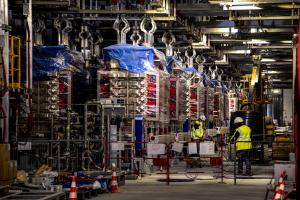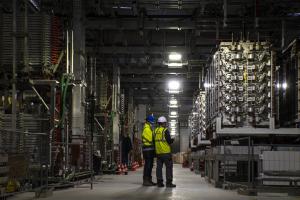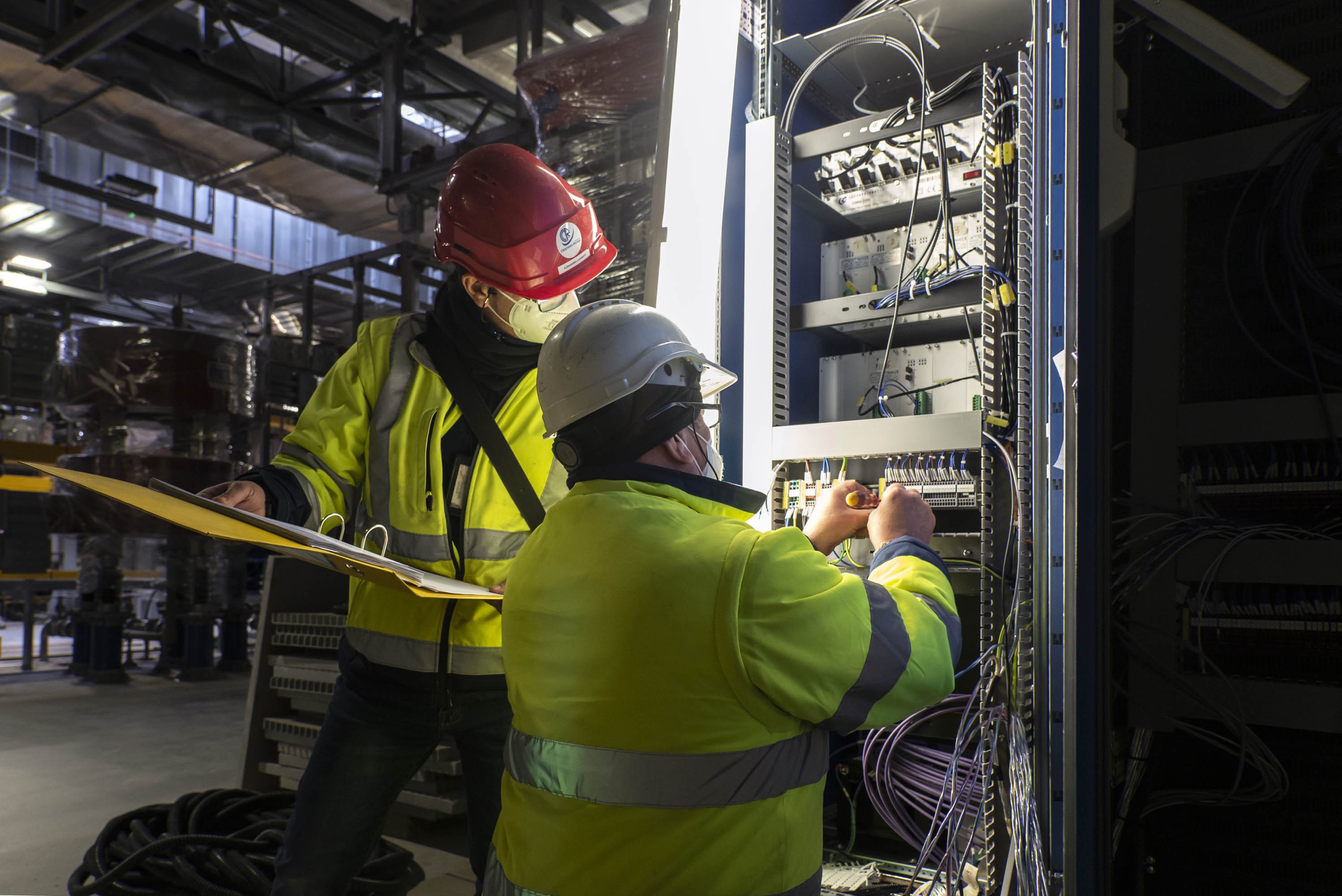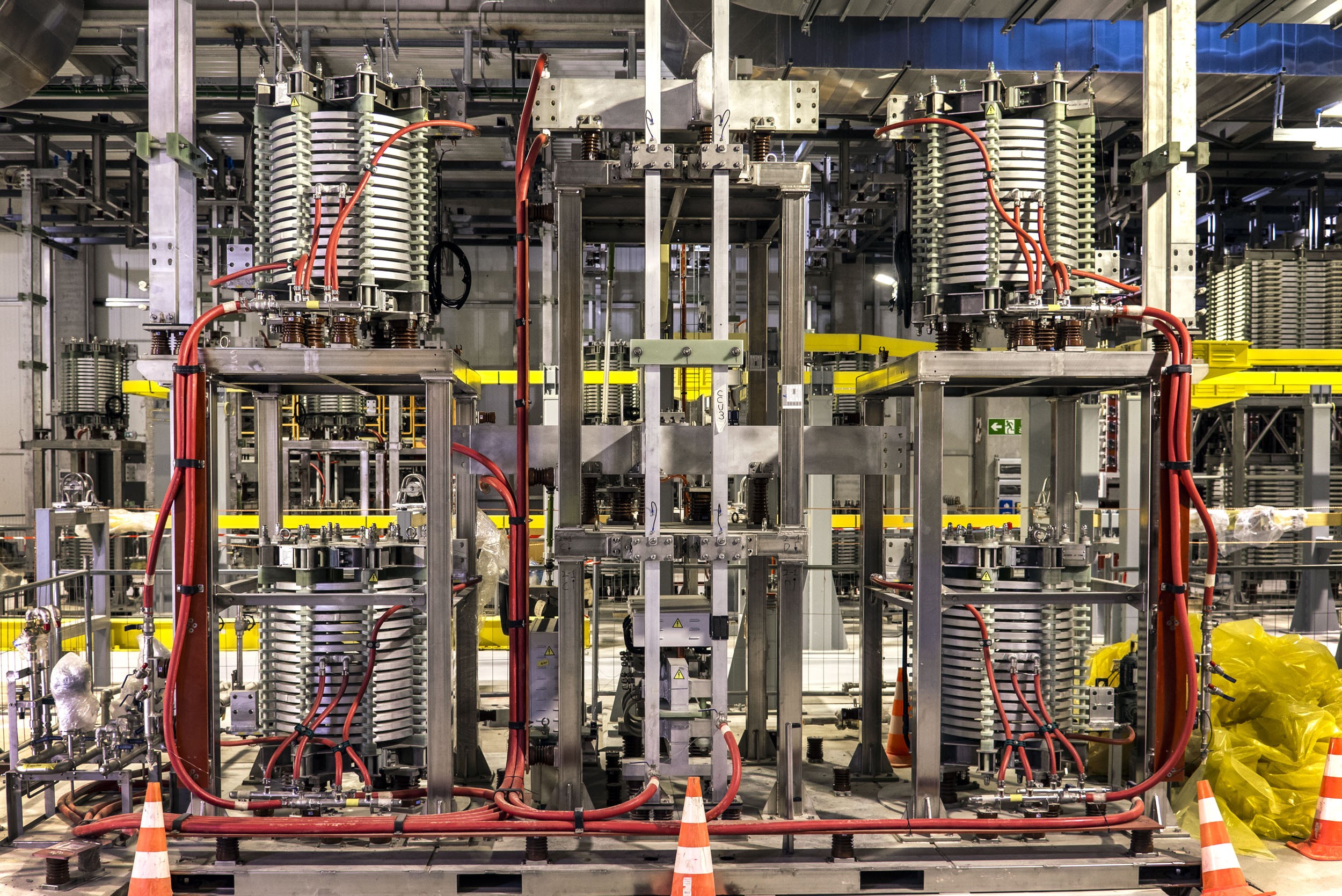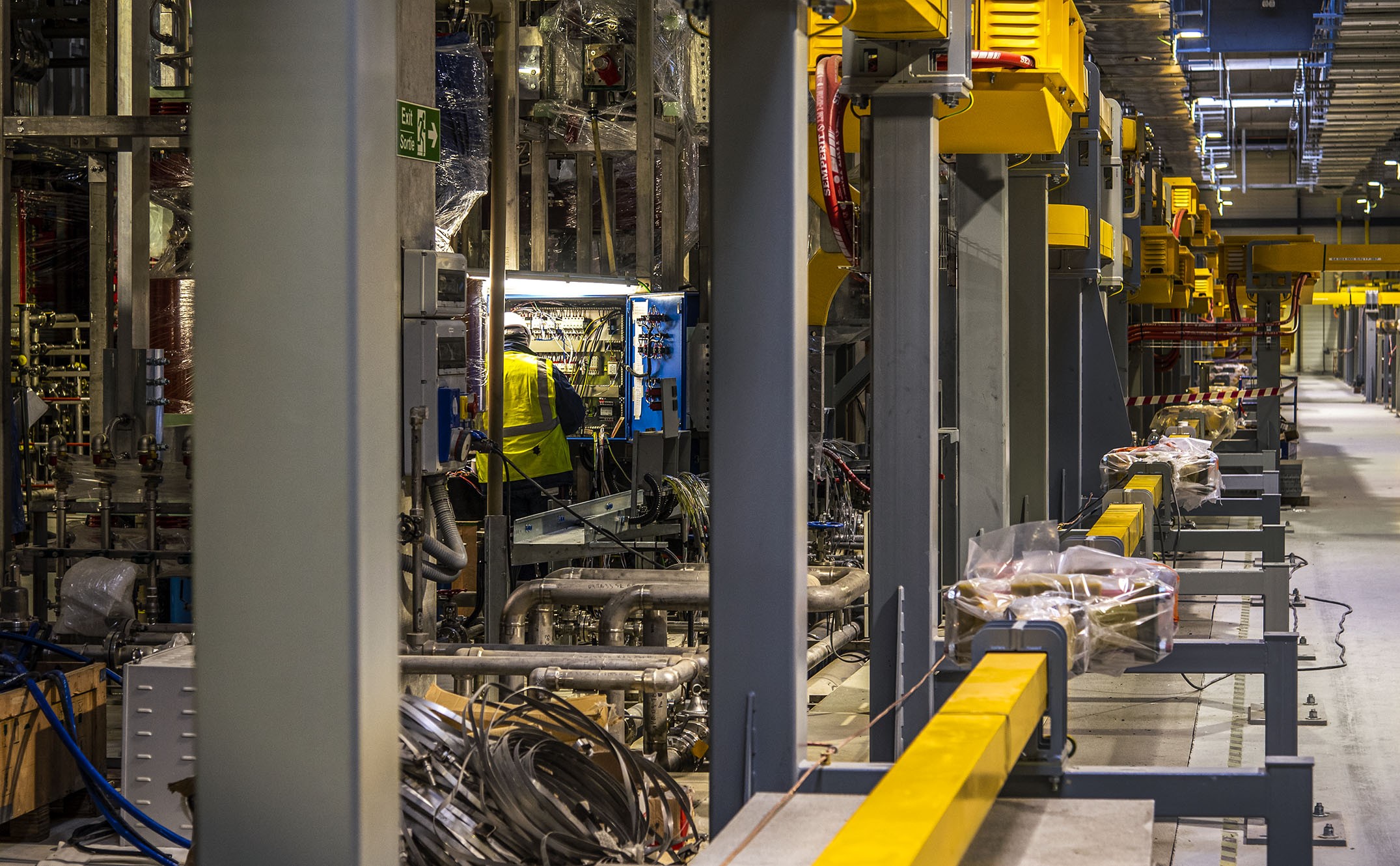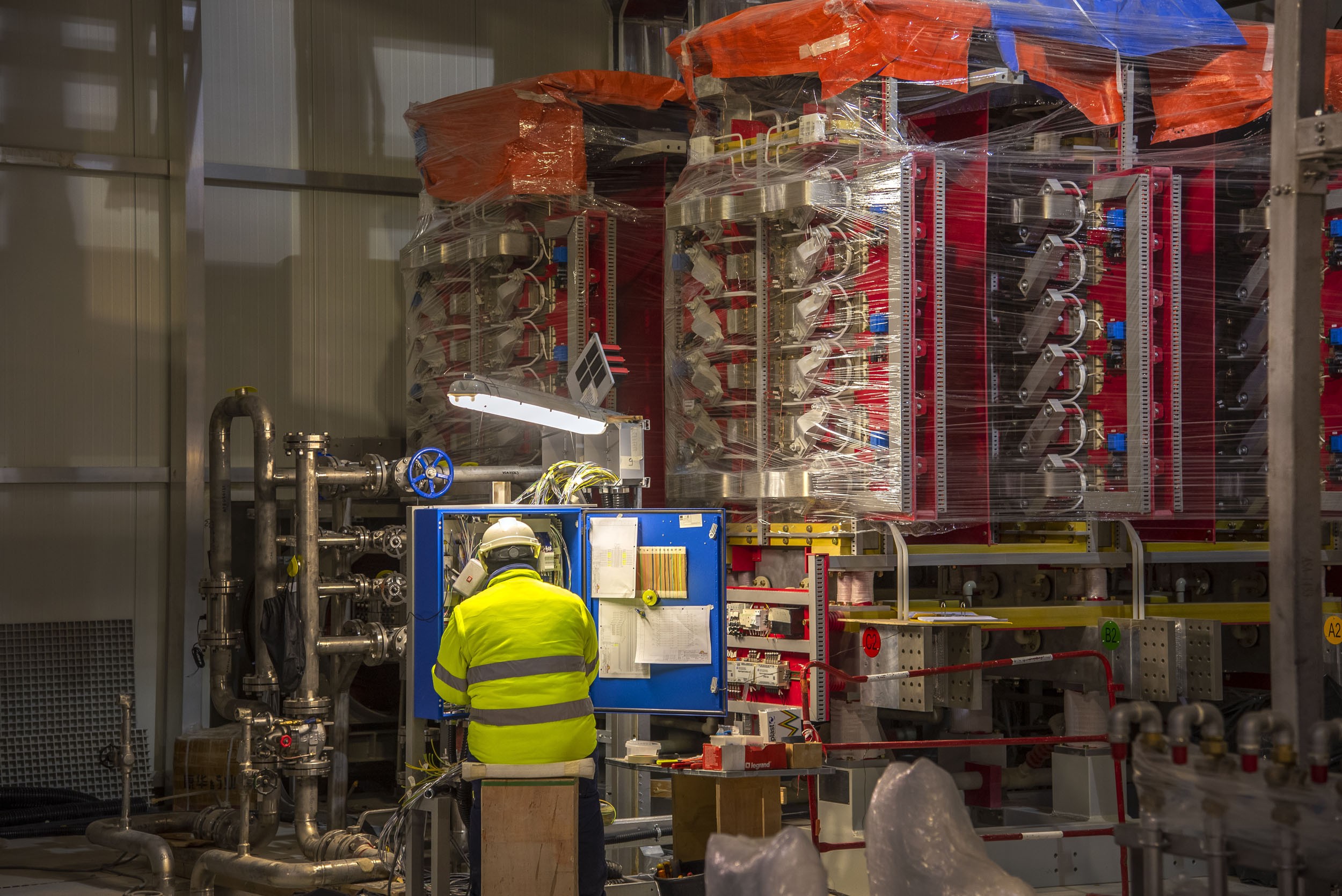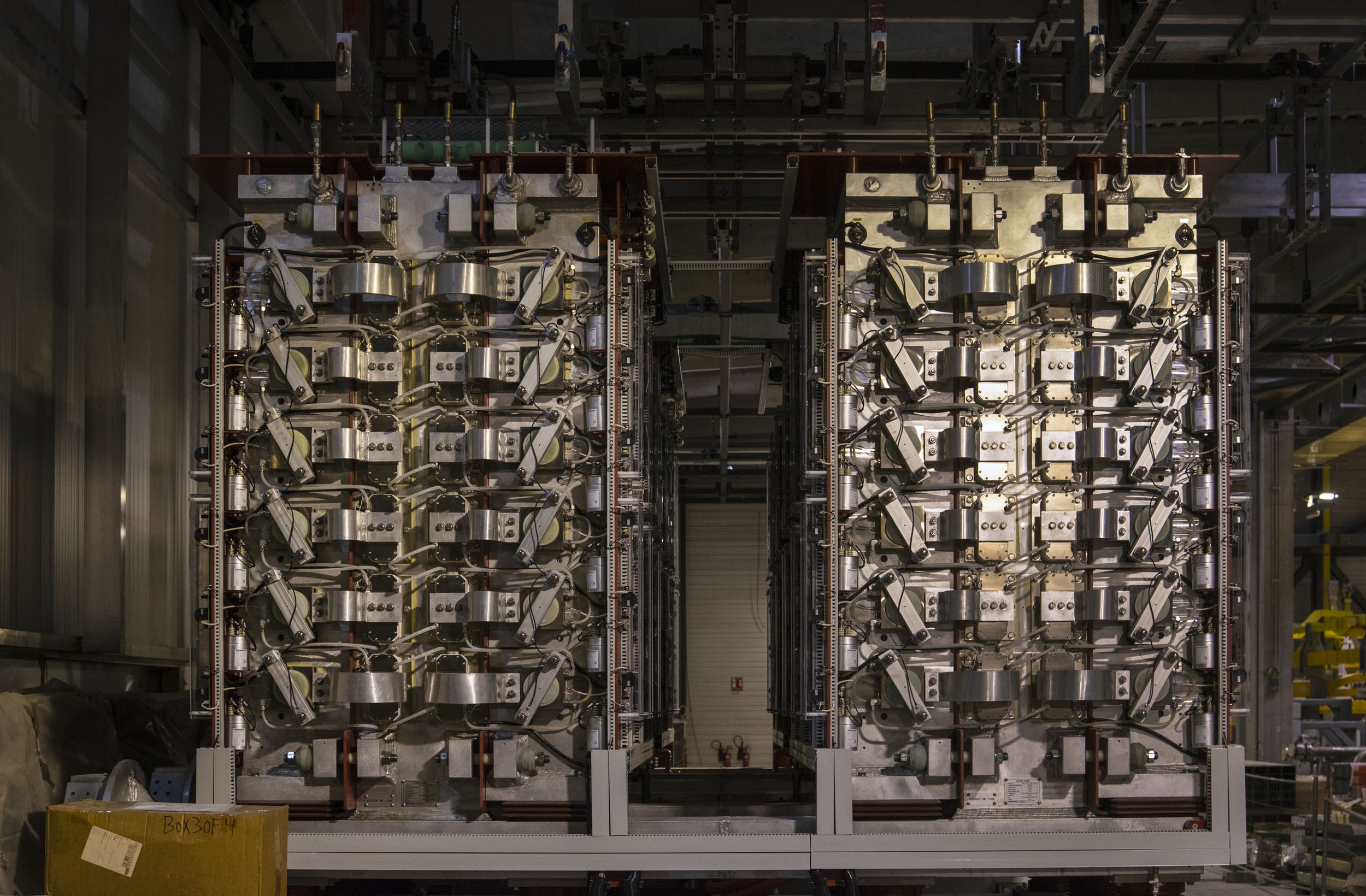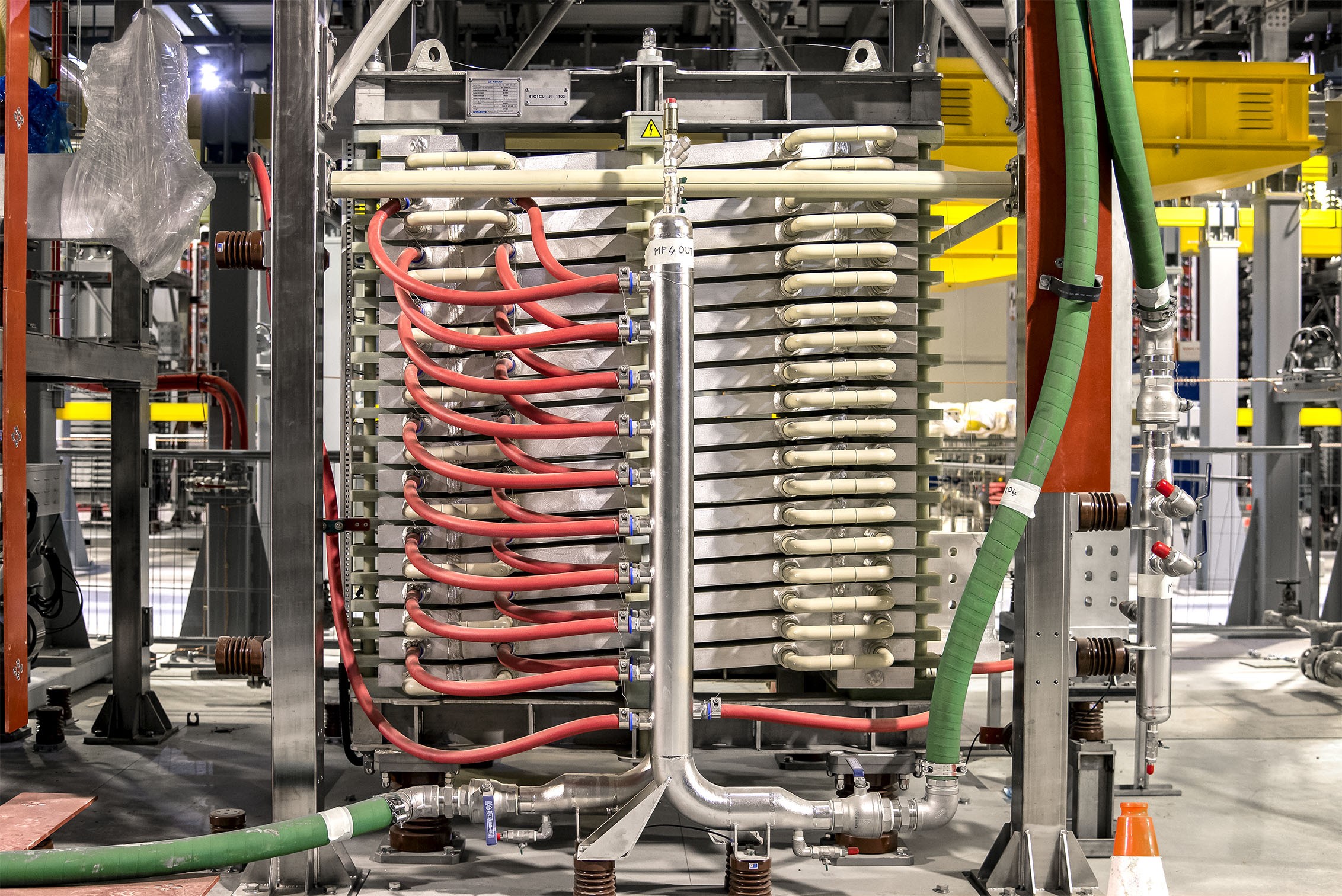Strolling along the AC/DC boulevard
Electrical power is both familiar and mysterious. In our daily lives, we rarely think of the extensive production, transport, conversion and distribution infrastructure that lies behind every switch and wall socket. In a place like ITER, where electrical power has a visible and massive presence (think of the installation's four-hectare switchyard and its mammoth transformers), the distribution infrastructure and all its alien devices and strange contraptions are there for all to see, at least for the moment. And no place is stranger or more alien than the twin magnet conversion buildings, where AC power is converted into DC current, filtered, and smoothed before being delivered to the machine's magnetic system.
If streetlights, water heaters and home appliances ran on DC current, ITER's twin magnet power conversion buildings could provide power to a city of 50,000 people. The clients for the infrastructure housed in these buildings, however, are not people but magnets—32 converter units, each weighing approximately 22 tonnes, dozens of corresponding "reactors," bridges to connect them, and kilometres of busbars are tasked with feeding the ITER tokamak's superconducting magnets ... all 10,000 tonnes of them.
Like futuristic townhouses lining a boulevard, bizarre contraptions line up along the whole length of the buildings, inside and out, creating a most peculiar atmosphere. What are all these steel and electronic devices for? Only a specialist can tell.
Along the "avenues," some blocks are identified by a sign printed in bold characters. This is an indication of what the equipment is destined for—the largest converter sets serving the most powerful coils such as the central solenoid or the 24-metre-in-diameter poloidal field coils, the smallest serving the much lighter corrections coils.
The underground infrastructure is no less impressive. Originating in the cooling tower basins, a large-diameter piping network runs underneath the boulevards, ramifying into much smaller pipes and eventually emerging close to the electrical components.
Because of the large amount of heat they generate, transformers, converters and reactors must be actively cooled at all times. When the installation is fully operational, cooling water will rush through the pipes and valves at the rate of close to 2,000 cubic metres per hour. "Even electronic switches must be cooled," explains David Stachler, the contract responsible officer for the installation of poloidal field coil units. "This is clearly a challenge as water and electricity are not supposed to coexist in such close proximity."
Equipment installation began in the spring of 2019, shortly after the twin buildings were transferred from the European Domestic Agency Fusion for Energy, which built them, to the ITER Organization. Close to three years later, 82 percent of the required equipment for First Plasma has been installed. One of the buildings (tagged #33 in the ITER naming system) is now completely equipped while its twin (#32) will only be fully installed after First Plasma. The full capacity of the buildings will only be needed when the project enters deuterium-tritium operations in 2035.
An installation playing such a central role in ITER operation must of course be carefully tested before being commissioned. Beginning this summer, each converter will be connected to a dummy load outside the building to verify performance prior to its connection to a magnet coil. The system relies on tens of thousands of manually connected cables, but each set of converters is equipped with a "DC disconnector" capable of shutting off the entire circuit in the case of an incident.
When current begins to run through the converters, reactors and busbars, the buildings will be closed to human presence and strolling along the AC/DC boulevards will no longer be possible.
A dense fibre optic network will link the control-command system to the power sources and magnets so that all operations can be performed remotely from the main ITER Control Building.

